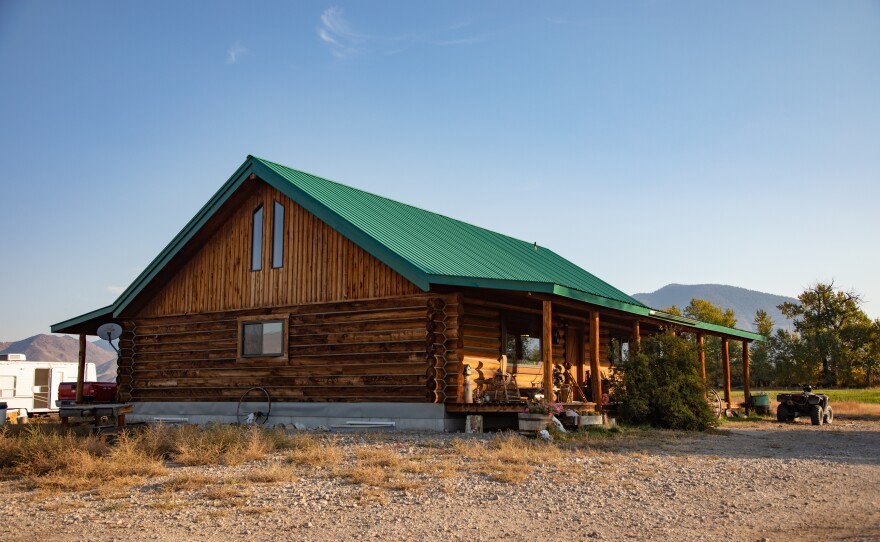Saddle maker Nancy Martiny is known for her flowing, intricate flower leather carvings. She ranches and builds saddles at her home in the high mountain desert of the Pahsimeroi Valley, near May, Idaho.
In 2021, she received the Idaho Governor’s Award in the Arts for “Excellence in Folk and Traditional Arts.”
“I say that I build cowboy saddles because most of my customers are working cowboys or ranchers, and they're going to have a certain kind of horse that they ride,” said Martiny.
In the world of cowboys, your saddle comes as unique as the place you’re from, built to handle weather, altitude and to get you over the specific challenges of the terrain you ride.
“Saddle maker is such a general term because what you ride on a cutting horse is not what you ride out here on the mountain,” Martiny explained.
The talented cutting horse is ridden in competitions to keep a calf separated from its herd by dodging quickly back and forth. The cutting saddle has a long, flat seat so the rider can move with the quick moves of the horse and has a tall horn that the rider can grip with one hand to help with their balance.
There are many variables when it comes to customizing a saddle. A saddle made for Texas riders protects from tall thorny brush and cactus. A Colorado saddle keeps you from sliding forward as you drop in elevation or from slipping off as you climb a peak. A Florida saddle will resist mold and bacteria.
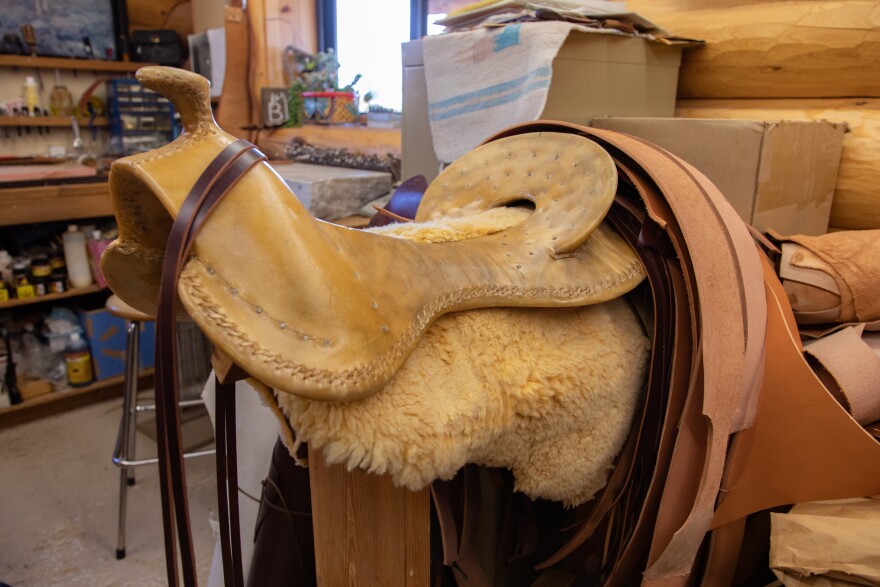
So what makes an Idaho saddle?
In Martiny’s part of the country, cowboys still drive cattle into the mountain ranges for the summer, then down to the valley to eat hay through winter. Cowboys need a saddle for mountain climbing, with a “swell fork” rather than a “slick fork” – the front part that the horn sits on. In southwestern Idaho the land is flatter, calling for the “slick fork.”
But most important to Martiny is comfort.
“I try to make the saddle comfortable for the horse and the person, regardless of their gender, their breed, their color,” she said.
A custom saddle can be tailored to the body of the human, the horse and the landscape. Form follows function in the craft of saddle-making, but decoration is at the top of any cowboy’s wishlist. The love of embellishment unites everyone, no matter where you’re from and why you ride.
“With the cowboy saddle, I always have told people that a cowboy is going to order as much carving as he can afford on his saddle.”
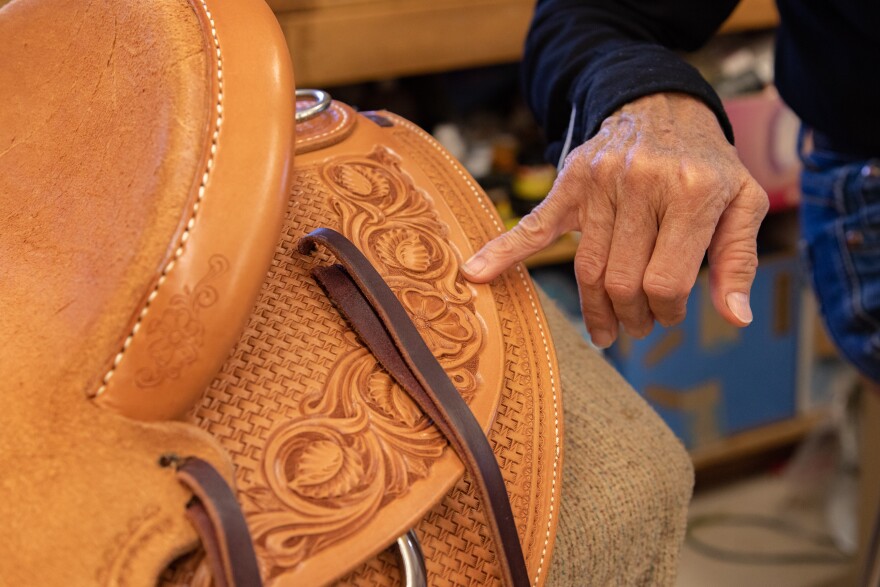
Martiny freely shares insight about the trade and has been recognized for her generosity in teaching others the art of saddle making. She’s offered her talents and mentoring through an organization that awards fellowships to women who practice western arts.
Her artistry is the culmination of many hours of practice, yet Martiny humbly admits students only gain true understanding through trying techniques themselves and learning from mistakes.
Through all the practice, she has developed a distinctive character in her work. She’s inspired by nature around her, designing flourishes and patterns from photos of flowers she takes around the ranch.
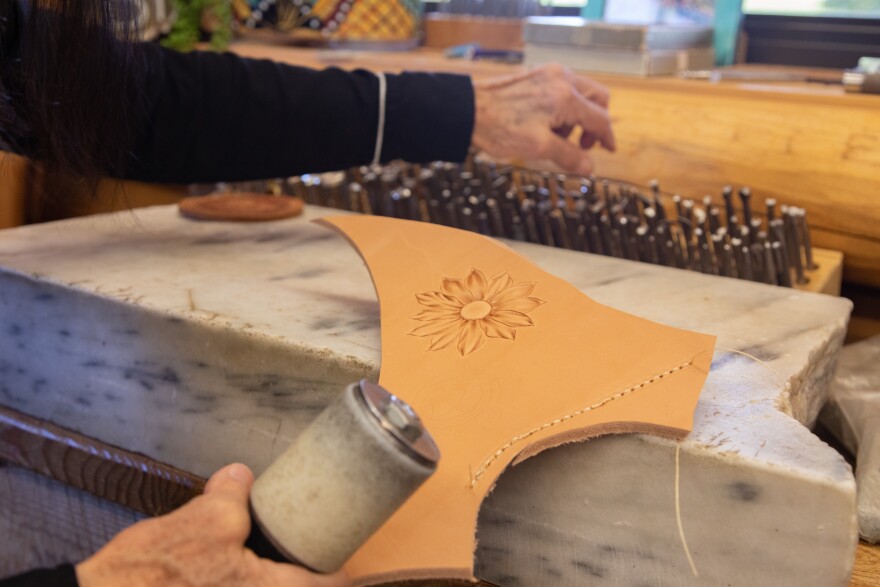
“I like my flowers to look very natural, very much like nature. And I want each petal to look a little different,” she said.
As intuitive and organic as the illustrations look, they are made with diligence and precision. Martiny’s designs reflect the math in nature.
“A lot of the art of it is what looks pleasing to the eye – the symmetry, the balance. If the line is supposed to be straight, it needs to be straight. If the line is supposed to be in a circle, then it shouldn't be an oval. There shouldn't be a wobble in it.”
While smooth and symmetrical, she says her carving technique isn’t super complicated and, for the most part, she only uses a few favorite tools. It’s what works uniquely for her.
“Nobody can teach you how to be good at it because you have to have a feel. If your leather is too dry, you won't get that burnish. The tool is imprinting that moisture in there. When the moisture goes away, it's like a footprint.”
Her experience teaching the craft shines through. As she describes her process with metaphors and manageable explanations, Martiny draws and carves a sunflower, free-hand, in a matter of minutes.

“I'm getting that piece of leather wet. I'm taking a tool, after I've drawn this, and I'm tracing over that with what's called a stylus. When I push that, that leaves an impression. And then I'm cutting that with a knife and then I'm using the hand tools, the hammer driven tools.”
The leather industry, like any, is full of specific jargon. Martiny reviews the terms without pretentiousness, and with the humility of a true master who understands there’s always more to learn and you have to start somewhere.
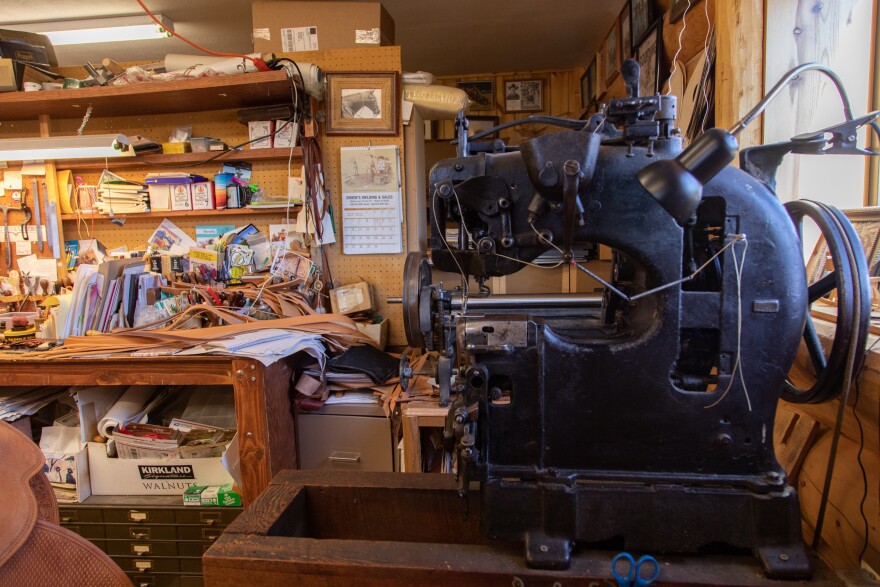
“The burnish is what you get when you hit that tool into the leather. It causes a darkening, kind of similar to a bruise, but that stays there and that's what gives you, what we call, color.”
Building a saddle requires not only precise cutting and carving, but also a mechanical skillset. Martiny wields an ancient, heavy-duty treadle machine that is taller than her, strong enough to manage and merge the pieces of thick leather.
“It takes two sides, so it takes a whole cow to build one saddle plus some more.”
She’s been making saddles for 35 years, learned first from her father, then from some of the greats.
“I was always around guys, doing what they call ‘guy stuff.’ Because my dad had helped me, and had built a saddle, it never seemed like I shouldn't be able to do it.”Nancy Martiny
Having learned to work with leather first, at 15 Martiny began saddle making with a solid base to build on. She kept working away at the craft throughout her life, building her skills, even when she had to juggle that with working on the ranch and raising her family.
Quiet and reserved, she builds saddles alone, but it’s also a collaboration. Martiny sources each part of the saddle from a network of trusted artisans and makers.
For example, the Douglas Fir base of the saddle, called the tree, is built by a craftsman in New Zealand, who’s been supplying her for 25 years. There’s also the client side. Martiny made many long-lasting relationships with her customers during her years of supplying rodeos with bucking horses.
Though there aren’t many women in the profession, Martiny doesn’t view gender as a hindrance, or even seem to notice the difference between genders.
“We're all doing the same job regardless if we're men or women. So we're cowboying. We're ranching.”Nancy Martiny
It’s a way of life that’s changing, but she believes that hand-made saddles are here to stay.
“‘The Cowboys are a dying breed,’ I’ve been hearing that my whole life. True, there's not near as many working cowboys as there used to be, but there's more and more people riding horses, a lot of them. It's a pleasure thing.”
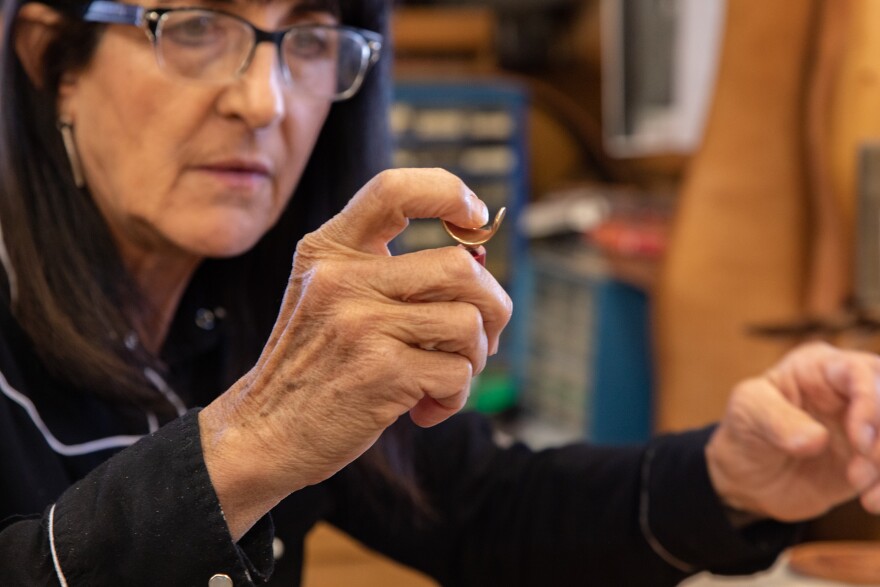
Martiny feels lucky to be doing what she loves in the changing times. She doesn’t take this life for granted.
“It's a privilege to live out here. If I wanted to make more money, I could go do something else. But I've never figured out what that would be.”
For a solitary saddle maker in the middle of nowhere, her expertise is in high demand. Most of Martiny’s saddles are built for repeat customers and the end of work isn’t in sight. She also designs and crafts belts, headstalls and other tack, plus an accessory and clothing line.

“I feel like there's always going to be demand for the high quality. Who, from the beginning of time, didn't want something nicer than somebody else's?” said Martiny.
She’ll keep plugging away, trying new things and honing the craft.
“You get the basics of building the saddle and then you spend the rest of your life perfecting that. This never gets boring because it's never the same, and you always have that challenge. When you get up in the morning, what can you do better today than you did yesterday?”
This piece was produced for Expressive Idaho in partnership with the Idaho Commission on the Arts’ Folk and Traditional Arts Program, with funding support from Dr. Suzanne Allen, MD and the National Endowment for the Arts.




